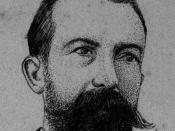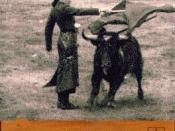Angels' Town is an ethnography of a Latino/a community just outside Chicago whereCintron's family lived while he was in graduate school. In both its style and political commitment, this ethnography follows from Michel de Certeau's understanding of everyday practices. Like de Certeau, Cintron sees everyday practices as rhetorical performancesthrough which people struggle over identity and power. From this perspective, written and oral language are one more everyday social practice like the Thumper and Too Low Flow cars, gang hand signals, a young boy's bedroom wall decorations, and the layout of city streets Cintron discusses"ÃÂthe bread and butter of cultural analysis.
Cintron calls his work an ethnography of the "rhetorics of public culture . . . the structured contentiousness that organizes, albeit fleetingly, a community or a culture"ÃÂ (x). His interest in structured contentiousness leads him to organize his story around the question "How does one create respect under conditions of little or no respect?"ÃÂ Three of the central chapters tell the stories of individual people struggling to construct identities and garner respect through everyday semiotic practices.
But the stories of these people are not primarily opportunities for explicit theorizing. Rather, in these chapters as throughout the book, the theoretical issues that drive the analysis are implied through metaphors that emerge from the fieldsite. For example, in a chap- ter about the elderly immigrant nicknamed Don Angel with whom he lived during his fieldwork, Cintron dwells on Don Angel's mastery of alburs. Alburs is a highly stylized verbal play that turns on sexual and scatological puns, some of them extremely intricate and subtle. Don Angel does not read or write English and is looked down on in the community as too traditional. But this "illiterate"ÃÂ immigrant regularly demonstrates his wit and verbal power in the game of alburs, which he plays with Cintron and his research assistants as well as with others in the neighborhood.
Alburs works by maintaining a coherent conversation about a conventional topic, but constantly undercutting the normative meanings with disruptive puns that run beneath the semantic surface. This model of a disruptive and resistant discourse that is parasitic on the normative provides Cintron the metaphor for Don Angel's relationship to state power and its official discourse. Cintron reads the rhetoric of identity cards, work permits, and application forms against Don Angel's collection of "official"ÃÂ identities, complete with birth certificates and the associated papers, which he uses as he needs them. As in alburs, Don Angel shifts identities tactically to undermine the control and stability of the normative order. Cintron then uses this model of a disruptive discourse, which runs against the normative but which also depends on it, as the vehicle for describing other scenes in which Angels' Town residents struggle for respect: the images of power and technology plastered on fourteen-year-old Valerio's bedroom walls; the excessively loud or exotic cars owned by young men in the neighborhood; the complex iconography of gang tags.
But Angels' Town is also a series of meditations on distance and order, the two things that organize the cultural struggles about which Cintron writes and that also make ethnography possible. The asymmetries of social and economic power that lie behind many of the everyday practices Cintron discusses are created by economic and social distance and by the desire for order. But distance is also inherent in the ethnographer's role, and his work is the construction of yet another analytic and narrative order. Cintron is keenly aware of the postmodern critiques of ethnography, but this book addresses these difficult issues through metaphor and performance, relegating documentation and critical argument to the notes. The rhetoric of the text is more subtle. Cintron nicely implicates himself in the ineluctable operation of distance and order at the same time he uses these problems to construct a powerful narrative.
These two moments of distance and order come together most powerfully in a chapter that contemplates the social and emotional violence so rife in Angels' Town.
Cintron explores the "logic of violence"ÃÂ and describes the pain, fear, anxiety, and scarcity"ÃÂthe rage for respect"ÃÂthat leads to violence. He contrasts this to a "logic of trust"ÃÂ that might interrupt the swift emotional mechanism that makes violence seem so inevitable. But Cintron recognizes the double edge of this analytic posture. His critical understanding of the cultural logic of violence is made possible by his distance from the cultural scene, by his critical work, and by the sheer social privilege and geographical distance his academic position affords him. At one moment near the end of this chapter, he tells of his ongoing relationship with fourteen-year-old Valerio who is delighted by a photograph of Cintron's house in Iowa. In a youthful expression of friendship, and perhaps longing, Valerio says that he will come visit Cintron there one day. The boy's fantasy of escape and Cintron's recounting of it epitomize the presence of distance and of different cultural and institutional orders that echo throughout the narrative. Cintron is consistently present in these dilemmas, describing his anguish over the violence in the neighborhood and his struggle to understand it. But the distance and order that separate the ethnographer from the community also provide the cultural and human understanding that motivate critical and action-oriented ethnography. Cintron articulates the core of this project and its critical purpose clearly, if somewhat hopefully: Can one argue critically for a big picture of social justice and simultaneously find solutions that make sense from the perspective of the local? I think so. The rhetorical trick might be to find insights and solutions that are not inconsistent with the reigning ideology but whose implementation has the slow-moving power to alter insidiously the existing institutions and ideologies that constitute the local. (196) This is a nicely written, thoughtful book that combines insight with respect for the community. Carefully theorized and engaged with contemporary debates, it is not densely theoretical. The feminist anthropologist Laurel Richardson has recently lamented that so many ethnographies of fascinating places are themselves dull; she admits that she often leaves such ethnographies unfinished. Cintron's is not such a book.




